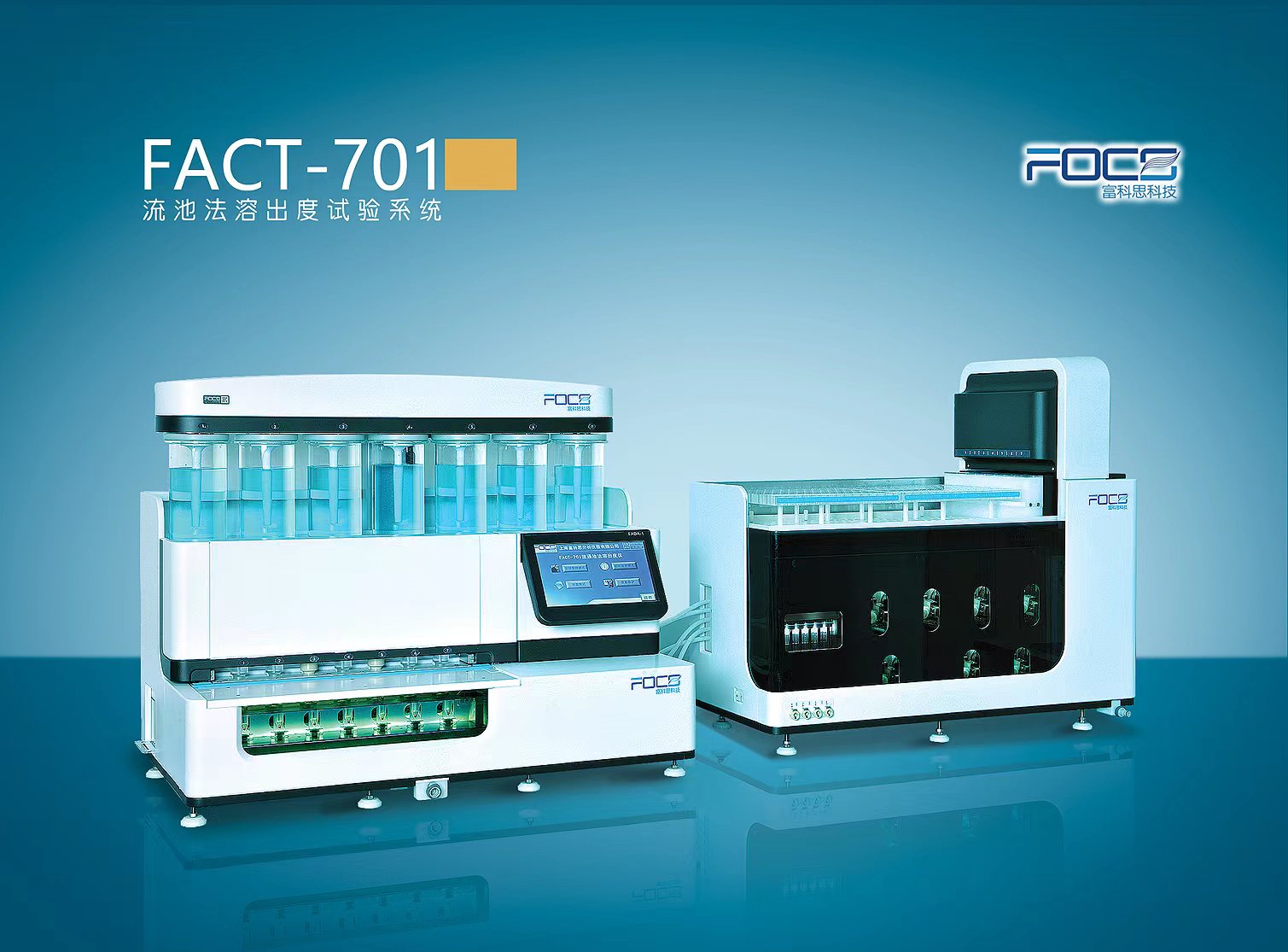


Introduction:
With the advancement of pharmaceutical technology, numerous challenges arise in applying the traditional paddle-basket dissolution method to test new types of medicines such as microspheres, stents, or implants. However, as a new technology, the flow-through cell dissolution method has unique open/close loop work modes that can better simulate the environment of human bodies and solve the problems faced when testing the dissolution/releasing rate of special medicines (such as medicines that are hard to dissolve or are in small dosages). In recent years, the Flow-Through Cell Dissolution System has become crucial for the research and development, as well as the quality control, of new extended-release formulations and delayed-release formulations.
FACT-701 is an Automated Flow-Through Cell Dissolution System that is independently developed and manufactured by FOCS. It is characterized by its simple structure and powerful functionality, allowing it to conduct seven channels of separated open/close loop dissolution experiments. This system plays a significant role in the research and development of extended-release formulations, delayed-release formulations, and other special formulations.
Technical Features:
System parameters and performance in accordance with CP and USP
Two-piece structure, simple, artistically pleasing, and user-friendly
Automated switch between open-loop and closed-loop dissolution modes, eliminating the need for complex manual operations to switch between different tubes
Automated rising and descending sampling rack and flow-through cell rack, capable of completing rising, descending, sealing, and filling with one click
Imported one-piece ceramic pump, providing a flow rate of 2-32 ml/min and a pulse flow mode of 120 Hz, in accordance with the requirements of USP
Seven built-in high-precision pressure sensors, monitoring the pressure of each channel in real-time and starting protection mode in the event of detecting abnormal conditions
Fourteen built-in high-precision weight sensors, monitoring abnormal conditions of the channels and accurately detecting deviations in flow volume
Built-in high-resolution camera system, automatically recording and saving the dissolution process which can be exported or viewed in real-time on other devices via the internet
Various custom-made cells, meeting the experimental requirements of various types of formulations
Imported PTFE tubes and PEEK control valves with excellent anti-absorption performance
Seven by thirty test tubes (10ml) tray and liquid phase vials (1.5ml) tray, capable of consecutively collecting samples for 30 times
High-precision sampling pumps and a low-temperature pre-heat module, guaranteeing precise sampling in low-temperature environments
High-performance touch screen with a simple and user-friendly interface
Multi-level authorized management system and real-time operation record, fulfilling the requirements of audit trail
Reserved fiber optic ports, available for an upgrade to fiber optic real-time dissolution testing
Featuring a two-piece structure, simple and user-friendly.
Enabling one-touch switching between open and closed-loop modes, eliminating the need for cumbersome manual operations during traditional mode transitions.
Automatically raising and lowering the flow-through cell rack, with one-touch controls for elevation, sealing, and filling.
Automatically raising and lowering the liquid withdrawal needle and sampling needle rack, facilitating one-touch execution of integrated open and closed-loop tests as well as cleaning.
Equipped with high-precision pressure sensors for real-time monitoring of channel status.
Utilizing two sets of high-precision weighing sensors for automatic calibration of flow rate deviations.
Incorporating an integrated high-definition camera system for automatic recording and storage of the dissolution process, with the capability to export and enable remote real-time monitoring.
Providing a reserved fiber optic interface for potential upgrades to fiber optic online real-time testing mode, facilitating easier access to the entire dissolution process (such as the Cmax point).
